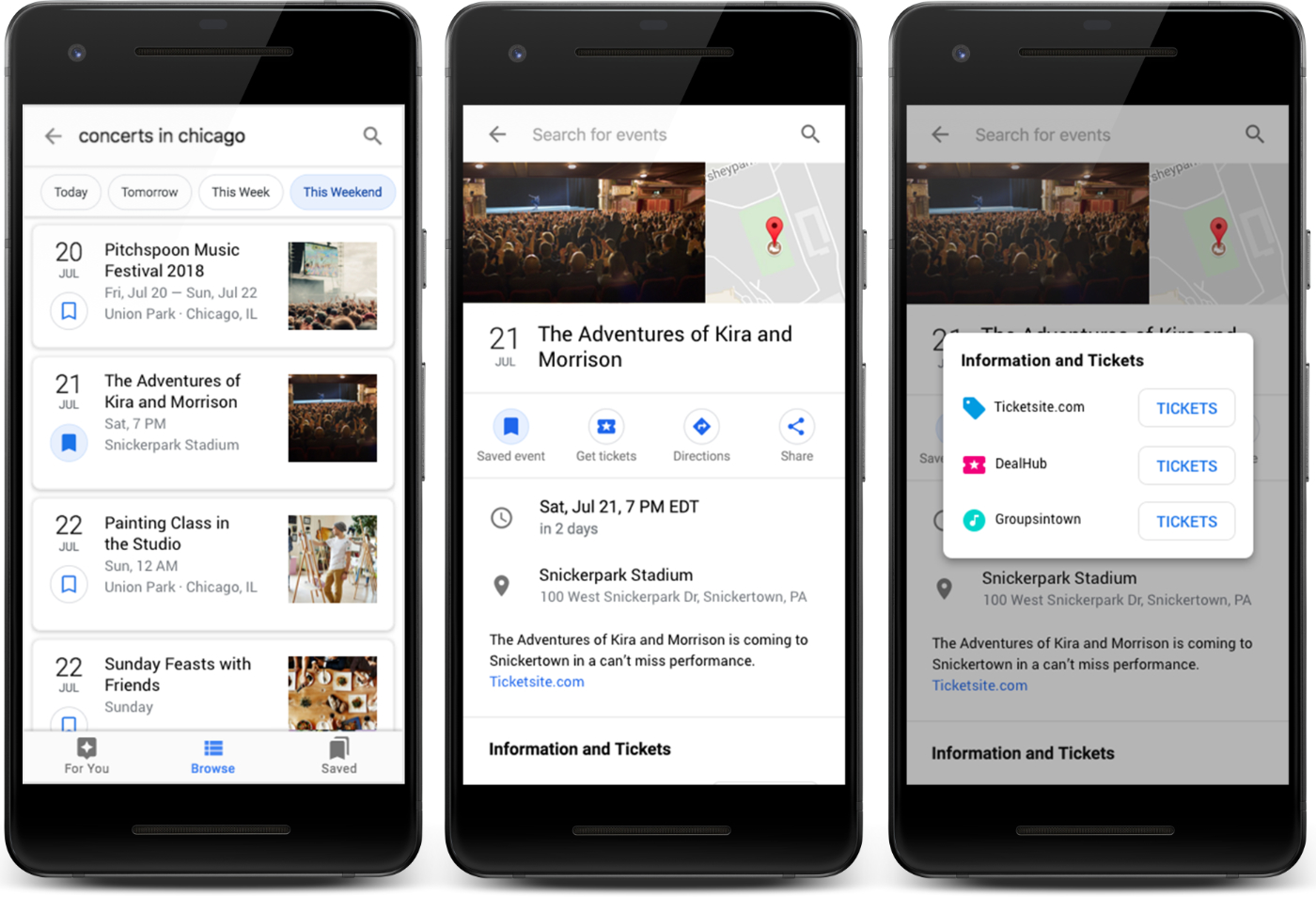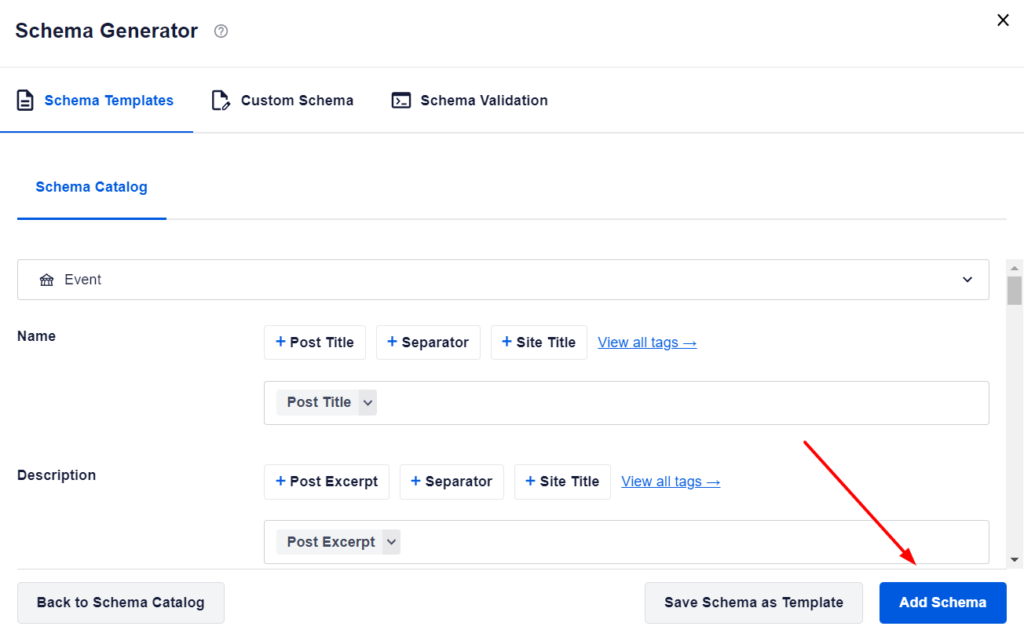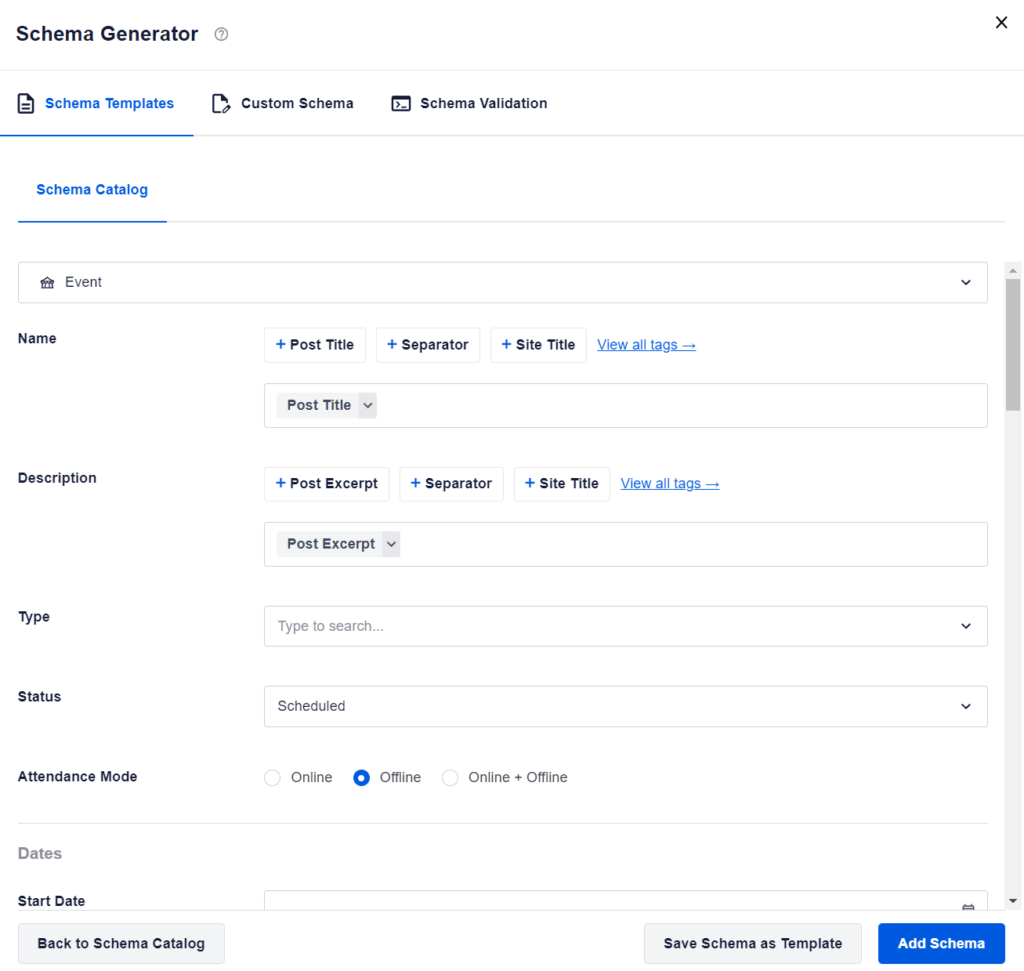Notice: There is no legacy documentation available for this item, so you are seeing the current documentation.
Did you know that All in One SEO Pro lets you add Schema markup for events?
This means that search engines can display rich snippets for your event like the examples below.

IMPORTANT:
You can’t force Google to display search results like this. It happens on a per search basis depending on whether they feel it’s the best way to display the results.
In This Article
Tutorial Video
Check out the video below on how to add event schema to your content:
Setting the Schema Type for Individual Events
NOTE:
Schema Controls for Events is available to customers with a Pro or Elite plan for All in One SEO Pro.
Upgrade to All in One SEO Pro today to get Event Schema and many more features!
To set the Schema Type for individual content, edit your content and scroll down to the AIOSEO Settings section, then click on the Schema tab.
Now, click the Generate Schema button to open the Schema Generator.

You’ll see the Schema Types that are available.
Click the Add Schema icon next to Event to add it.

You can now edit the schema information.
Once done, click the Add Schema button to add the schema to the post.

The Event schema has now been added to the post.
If you would like to edit any of the schema properties or delete the graph, click the Edit Schema or Delete Schema buttons in the graph card.

Configuring the Event Specific Information
When you click on Event as the Schema Type for your content, you’ll see a popup with additional fields where you can enter your event information.
NOTE:
The information you set in All in One SEO only appears in the source code of your content. It does not appear as content visible to visitors on your site.

Complete the fields as described below:
- Name – Enter the name of your event. By default, this is set to your post title.
- Description – Enter the description of your event. By default, this is set to your post content.
- Type – Select the type of your event.
- Status – Select the status of your event.
- Attendance Mode – Indicate whether the event will take place online, offline or both.
In the Dates section, you can set the following:
- Start Date – Enter the start date for your event.
- End Date – Enter the end date for your event.

In the Location section, you can set the following:
- Name – Enter the name of the location where this event is being held.
- URL – Enter the URL of the location where this event is being held.
- Address – Enter the address where this event is being held.

In the Offer section, you can set the following:
- Price – Enter the ticket price for your event. You can enter “0” in case the event is free.
- Currency – Select which currency your ticket price is in.
- Sale Start Date – If tickets are available for a limited time then select the date that they’re available from.
- URL – Enter the URL for the page where tickets can be purchased.

In the Organizer section, you can set the following:
- Type – Select whether the organizer is a person or a group/organization.
- Name – Enter the name of the organizer .
- URL – Enter the URL of the organizer’s website or social media page.
You can leave all these fields blank if you have set an Organization in the Knowledge Graph settings and want to use that one.
In the Performer section, you can set the following:

- Type – Select whether the performer is a person or a group/organization.
- Name – Enter the name of the performer.
- URL – Enter the URL of the performer’s website or social media page.

In the Images section, you can upload one or multiple images that represent your event. You can also paste in the URL for an image.

Once you’ve completed the fields, click the Add Schema button to save them.
You can also save this as a template which you can use on other events by clicking the Save Schema as Template button.
You can learn about Schema Templates here.
Additional Information
Check out more documentation on our Schema Settings here.